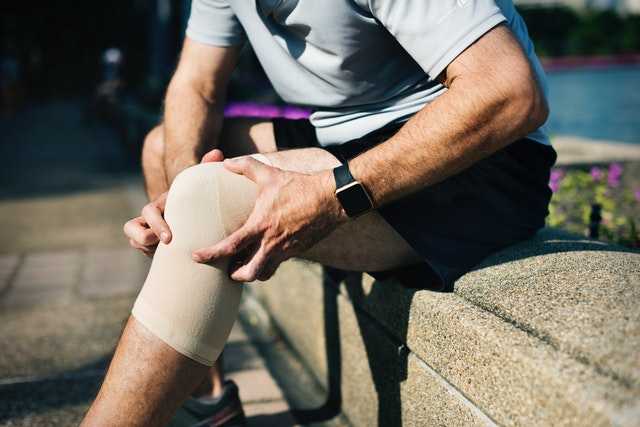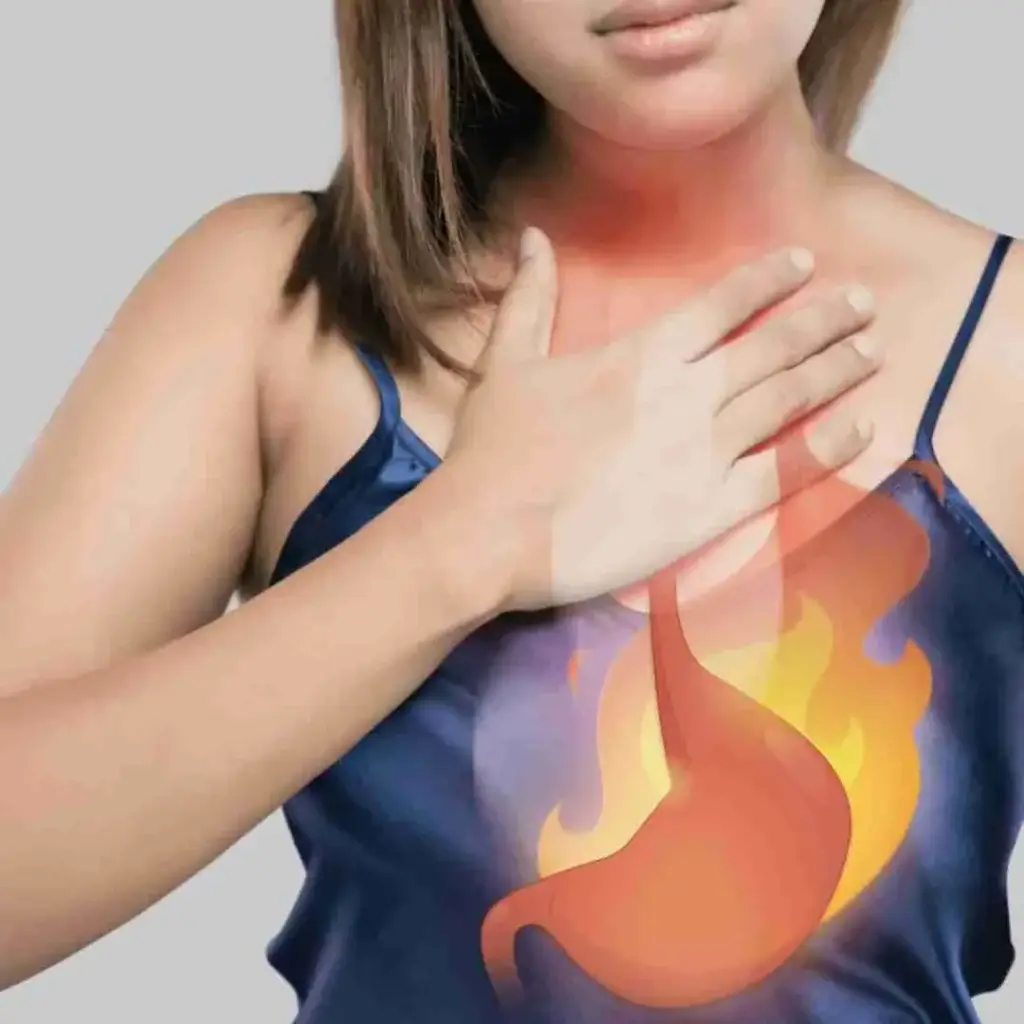Joints are the places on the body where two or more bones meet. Humans have three main types of joints: synovial, cartilaginous, and fibrous. Synovial joints are freely movable, meaning that they allow you to extend, rotate or pivot the bones to which they are connected. Some common examples of synovial joints are the knee, elbow, wrist, and knuckle joints.
Cartilaginous and fibrous joints provide little to no range of motion; the fibers that connect the bones on your skull are examples of fibrous joints. Cartilaginous joints can be found in between the vertebrae or connecting the pubic bones. When we talk about joint pain, we are typically referring to synovial joints.
Synovial joints, as the name suggests, are surrounded by a membrane filled with synovial fluid. Synovial fluid is a viscous liquid that keeps joints lubricated, but too much of it can trigger inflammation and pain. More often than not, joint pain occurs when there is a buildup of synovial fluid caused by normal wear and tear, an injury, or an autoimmune condition.
Joint pain can be chronic or temporary, mild or severe, and it can happen for several different reasons. These are five important facts that everybody who experiences joint pain should know.

Joint pain can be caused by a variety of factors
The most prevalent cause of joint pain is arthritis, which is not a disease in and of itself, but an umbrella term used to describe inflammation and pain in one or more joints. Arthritis is extremely common; according to the Centers for Disease Control and Prevention (CDC), one in every four American adults suffers from some type of arthritis. As of this year, arthritis is the leading cause of disability in the United States.
There are more than 100 different types of arthritis, and while it is usually more common among older adults (especially women), people of any age or gender can develop it. The two most frequent forms of arthritis are osteoarthritis (OA) and rheumatoid arthritis (RA).
OA, sometimes called degenerative arthritis, happens when one or more joints break down as a result of normal “wear and tear.” OA is the most common type of arthritis in middle-aged and older adults and tends to affect the hands, knees or hips. Symptoms of OA include pain, swelling, stiffness, and tenderness in or around the affected joints.
RA is an autoimmune disease that happens when the immune system attacks the joints and other parts of the body by mistake. When a person has RA, their immune system constantly activates an inflammatory response that causes the joints to swell and become extremely tender and painful. While most types of arthritis cannot be cured, certain medications, lifestyle changes, and natural supplements have been shown to help ease the symptoms and manage their pain.
But arthritis is not the only responsible for joint pain; other factors and conditions that may cause pain in or around the joints are:
- Bursitis
- Fibromyalgia
- Gout
- Hypothyroidism
- Injuries
- Lupus
- Lyme disease
- Polymyalgia rheumatica
- Some types of infections
- Tendonitis
- Whipple disease
Medications can help ease joint pain
Nonsteroidal anti-inflammatory drugs (NSAIDs) are over-the-counter (OTC) pain relievers that reduce inflammation and relieve pain and discomfort. Common NSAIDs that you’ve probably seen or even used yourself before are ibuprofen (Advil), naproxen (Aleve), and aspirin. These medications can help with mild to moderate joint pain and even arthritis.
When OTC medications aren’t effective, your doctor may want to take a more serious approach. Injections are usually the second line of treatment for moderate to severe pain that doesn’t respond to drugs because they allow the medication to penetrate directly into the joint.
Depending on the type of injury and the location of the pain, your doctor may decide to inject hyaluronic acid, corticosteroids, stem cells or platelet-rich plasma. The downside to injections is that the effect is temporary, so the pain generally returns within a few months.
But long-term medication use can cause serious side effects
Just because OTC medications are available without a prescription doesn’t mean that you shouldn’t be careful when you take them. Experts advise never taking NSAIDs for more than ten days without consulting a healthcare professional because extended use has been shown to:
- Increase your risk of having a heart attack or stroke
- Cause headaches and dizziness
- Develop stomach ulcers or cause stomach bleeding
- Cause heartburn
- Increase blood pressure
- Damage the liver and kidneys
Nutritional Options
Supplements with proven benefits for joint pain include Boswellia, hyaluronic acid,
Boswellia – A tree that produces a resin known to have anti-inflammatory properties and therapeutic benefits for joint pain/arthritis, rheumatism and gastrointestinal disorders. Of all the Boswellia species, Boswellia Serrata is the most commonly used in herbal extracts and research. (100 mg / day)
Hyaluronic Acid – Is similar to a substance that occurs naturally in the joints. It works by acting like a lubricant and shock absorber in the joints and helps the joints to work properly. Hyaluronic acid helps in both initiating early inflammation for recovery and stopping the natural inflammatory response from going overboard. (150 mg / day)
Ginger – Recent research studies have shown that ginger can help reduce inflammation in people with arthritis and joint pain. Ginger contains more than 200 substances in its oils, which is why it has so many different uses. It has been used medicinally for thousands of years in Ayurvedic medicine in India and has anti-inflammatory, anti-ulcer, and antioxidant properties. Ginger has been known to be beneficial for arthritis sufferers because it blocks the formation of inflammatory compounds (prostaglandins and leukotrienes) and also has antioxidant effects that break down existing inflammation and acidity in the fluid within the joints. (600 mg / day)
Feverfew – Traditionally used for joint pain, feverfew is more commonly used in migraines. This herb can protect the joint against inflammatory changes. It can reduce the symptoms of arthritis-like pain in the joints, restricted movements, swelling in the joints, redness of the skin overlying the joint, and stiffness. (50 mg / day)
Boron – The element boron plays an important role in the integration of calcium into the joint’s cartilage, which helps prevent joint deterioration and arthritis pain. Research shows people with lower boron concentrations in their bones and synovial fluid experience higher rates of arthritis than those with higher levels. (10 mg / day)
Magnesium – Magnesium helps promote a healthy inflammatory response, improves calcium absorption, and reduces oxidative stress. The sufficient intake of magnesium is particularly important for maintaining muscle and nerve function, which also contributes to the structural development of bones—especially important to those involved in sports, the elderly, and anyone of any age with joint issues.
Vitamin C (ascorbic acid) – In terms of joint health, vitamin C is critical for the production and maintenance of collagen, the major component of connective tissue throughout the body. Our joints are largely made of the fibrous protein “collagen”, supporting both flexible and strong joints.
Physical therapy can give you some of your mobility back
When medications simply aren’t cutting it – but you are not ready for major surgery yet – it may be time to consider other options for relieving your pain. Physical therapy (PT) is a fantastic drug-free alternative for managing arthritis and other conditions that cause joint. The principal benefit of PT is that it can help you relieve stiffness and pain by gently strengthening the affected joint and surrounding areas.
PT uses a combination of tailored exercises and therapeutic approaches like ultrasound, massage therapy, and hydrotherapy to help people recover from injuries, manage conditions like RA or OA, and improve balance.
During a PT session, a licensed professional, called a physical therapist or physiotherapist, will assess your condition by asking you to perform a series of movements. Then, they will create a personalized routine and teach you exercises that you can do at home to improve your range of motion. In many cases, PT can help people avoid surgery and significantly improve their quality of life.
PT is often prescribed by doctors, but in some states, you can go to a physical therapist by yourself without a referral. Most health insurances cover all or most of the costs of PT.
Lifestyle changes can minimize pain
Natural approaches to pain management are becoming more and more popular because people want to avoid the side effects of painkillers. Here are three lifestyle changes that will help you maintain function and keep your pain at a minimum.
Hot and cold therapy
Applying heat and cold to your joints is the simplest (and cheapest!) treatment to relieve joint pain, and you can do it from the comfort of your own home. Heat is an effective home remedy for treating stiffness because it promotes blood circulation and relaxes the muscles, and cold reduces inflammation and temporarily alleviates pain.

Apply heat to the affected area by taking a long, warm bath or by laying a heating pad or electric blanket over the affected area. Cold treatments can be done by placing a gel ice pack on the painful joint, but remember to protect the skin with a towel or a cloth to avoid injuries. Do not apply cold for more than 8 minutes at a time.
Losing weight
Every one pound of excess weight exerts three to six pounds of extra force on joints. Losing even a couple of pounds can significantly improve joint pain according to experts. In fact, one research study published in 2005 found that losing only one pound can ease up to four pounds of pressure from your knees. This means that if you lost just five pounds you would be removing 20 pounds of weight from your knee joints!
Swimming
Everybody knows that physical activity is important for improving your overall health and reducing your risk of developing a chronic condition like heart disease or type 2 diabetes. Regular movement also helps to maintain flexibility in your joints. However, when you have an achy joint exercising is usually the last thing on your mind and weight-bearing exercises such as running and walking can be damaging.
The good news is that low-impact exercises such as aquatic activities are both gentle on the joints and extremely effective at soothing pain. The buoyancy of water reduces impact while making you work harder than you would on land, which means that you can burn more calories.
Swimming on a heated pool can also provide some much-needed relief. Remember to bring a flotation device if you are going to work out the deep end of the pool if you get tired or want some extra support.
Keep Moving
Joint pain can make even the simplest of activities challenging. Holding a joint still to protect it or to avoid pain can make moving more difficult and put pressure and stress on other parts of your body. For example, a painful knee can cause you to walk in a way that affects other parts of your body, such as your feet, back, and hips. You must keep moving, however, to maintain flexibility and joint health. Taking dietary supplements and incorporating the above-mentioned tips into your daily routine can go a long way towards keeping active by protecting and lubricating your joints, improving mobility, and promoting comfort.
Never Underestimate the Power of Nutrition
To learn more about a combination supplement to nutritionally support overall joint health, joint integrity, and joint comfort, visit AllJointsUltra.com


